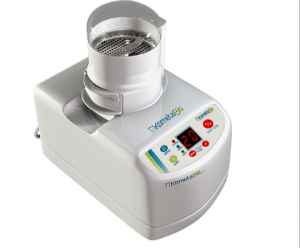Following tooth extraction, the surrounding bony architecture will collapse as early as 3 months following extraction (see figure 1). This fact is well documented by numerous classic studies.

To place implants, a sufficient volume of bone is needed in order to completely surround and support the implant just as a nail needs to embedded in a sufficient volume of wood.
If the socket collapses following extraction, this could greatly compromise the clinicians ability to place an implant since there is less bone to work with.
Research has shown that placing graft material within the socket following tooth extraction will significantly reduce the loss of bone. This improves the possibility of subsequently placing implants. The grafted bone provides the scaffold for new bone to form and ultimately the grafted bone is replaced by the patients own newly formed bone.
There are many types of graft material being used today. Commonly used graft materials are Bovine bone (from a cow), Porcine bone (from a pig) and Allograft bone (Cadaver bone).
While these graft sources have been used for years, some patients may object to using them for religious convictions or other reasons.
The newest source of graft material is a Dentin Graft derived from your own teeth. When teeth need to be extracted to allow for implant placement the teeth can be ground up with a newly developed device in our office, The Smart Dentin Grinder (See Figure 2)

New research is demonstrating that dentin (tooth) grafting can be used to regenerate bone. There are several reasons to support the findings. First, Dentin (tooth) is similar in chemical composition to bone. Second dentin contains similar proteins found in bone. Third, dentin contains growth factors necessary for bone formation.
The technique is rather simple. Once the teeth are extracted, they are ground up in special grinding device into small particles and then treated with special solutions to disinfect and remove unwanted debris. The particles are then placed in the extraction socket.
Once the appropriate time is of healing is allowed..usually 3 months…a well secured implant can be placed in the newly formed bone.